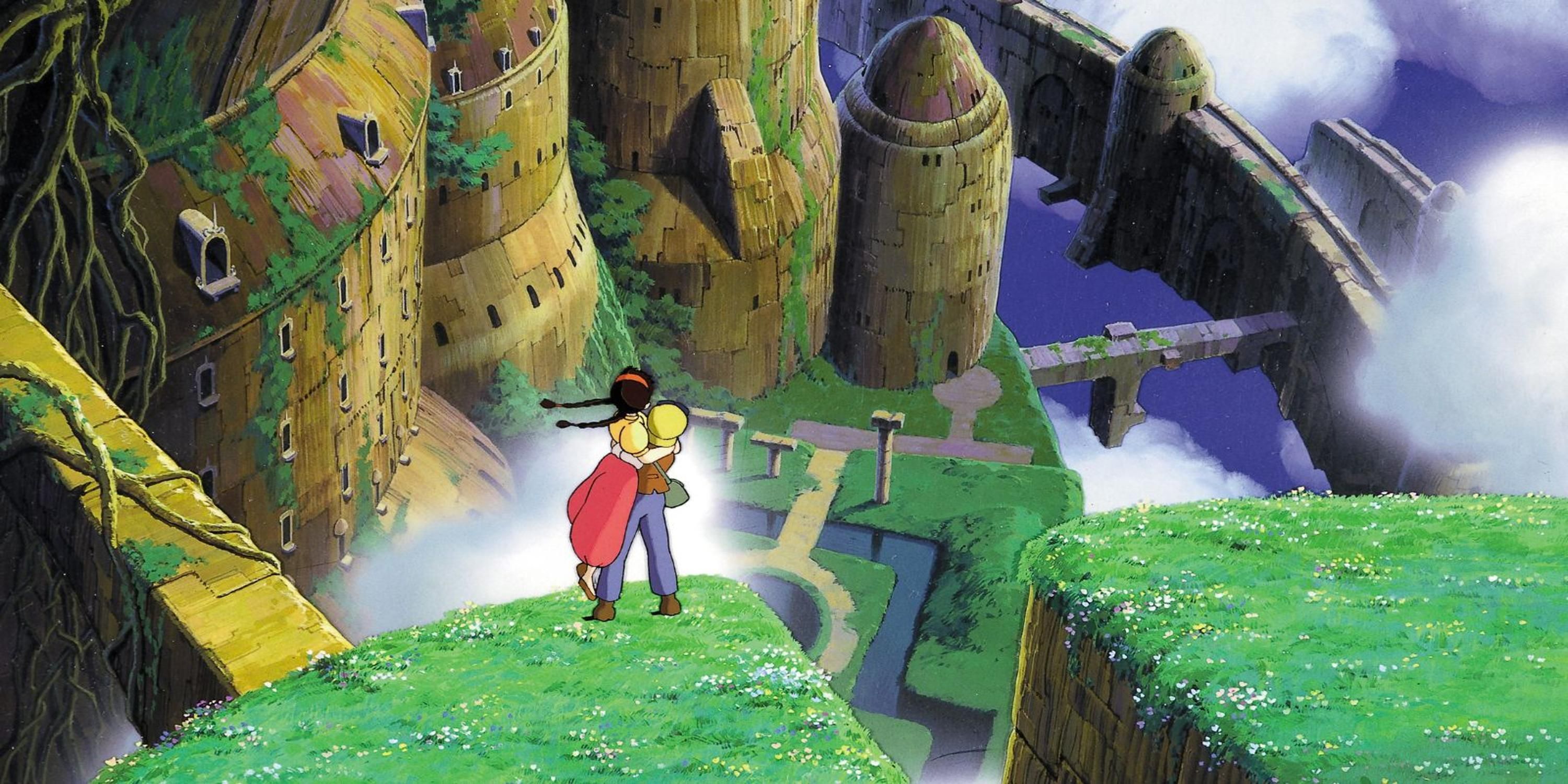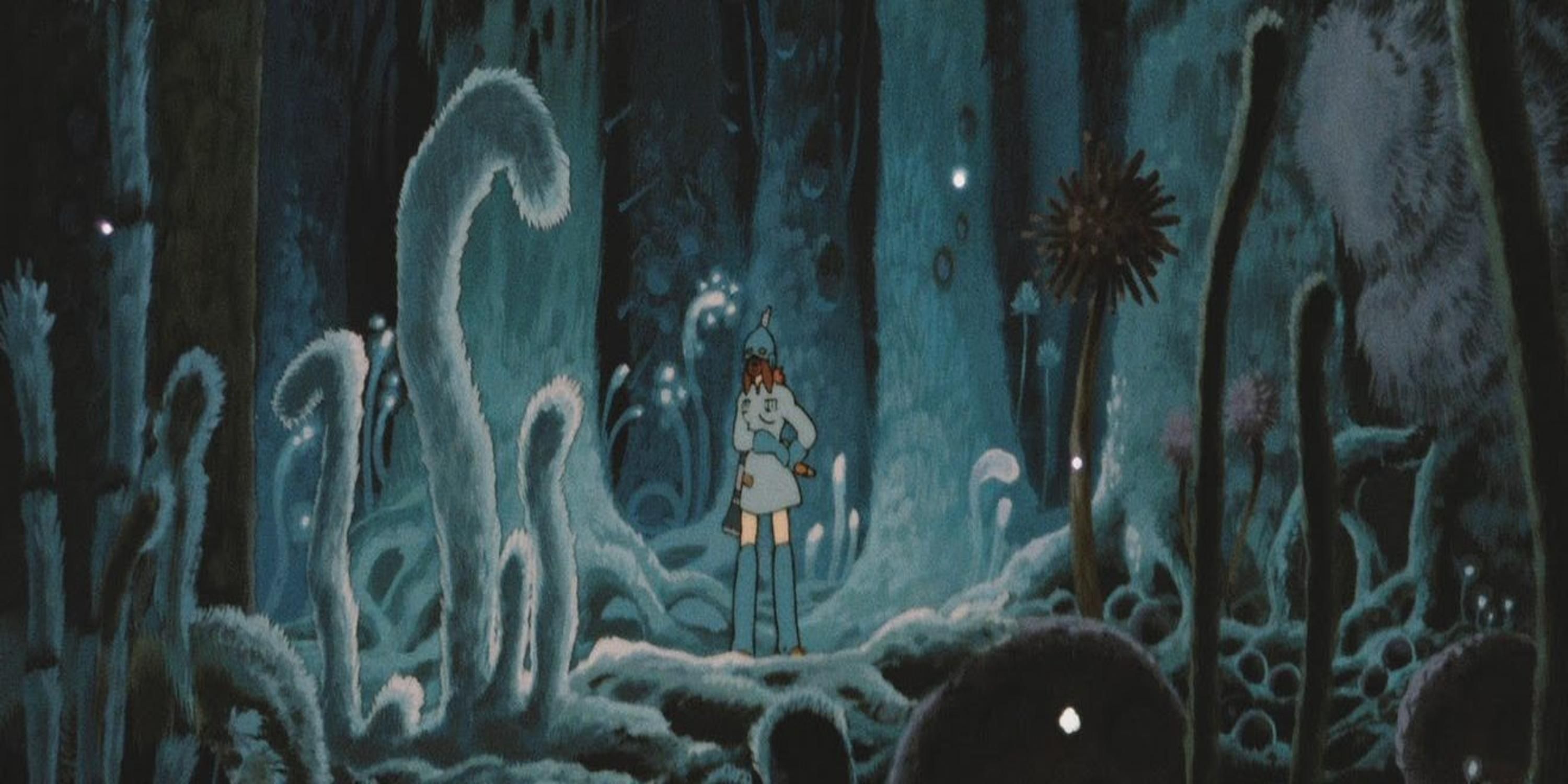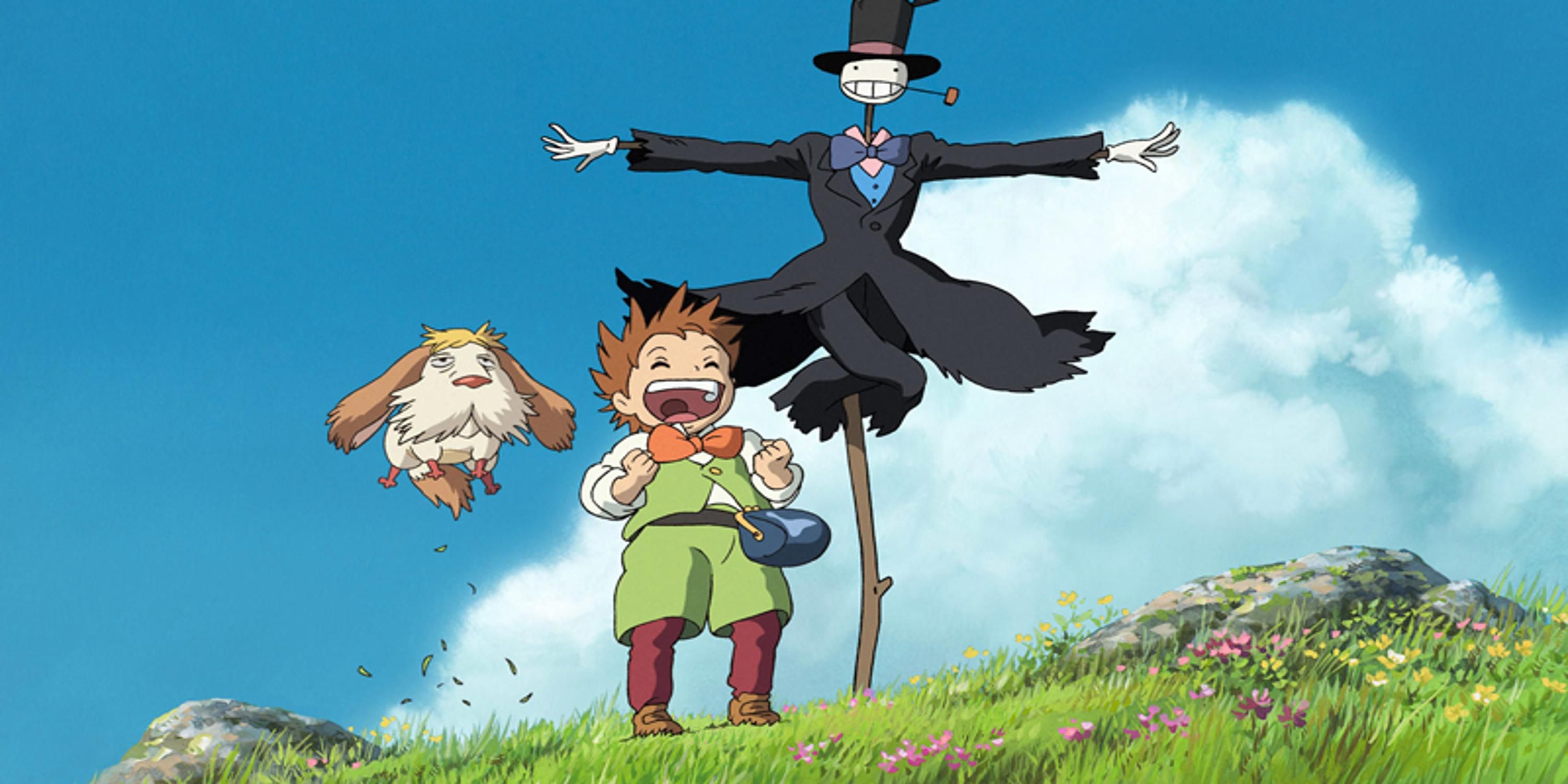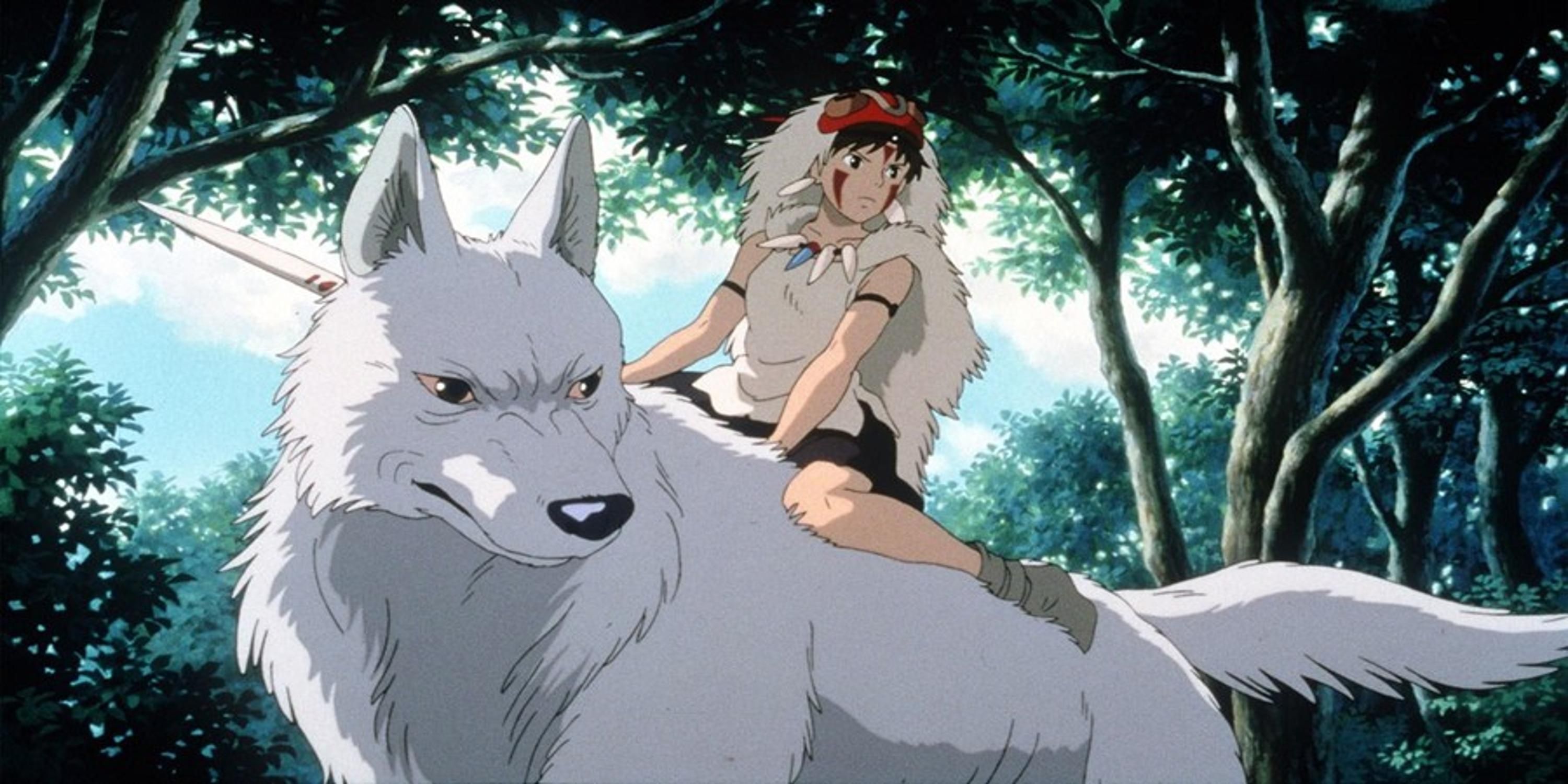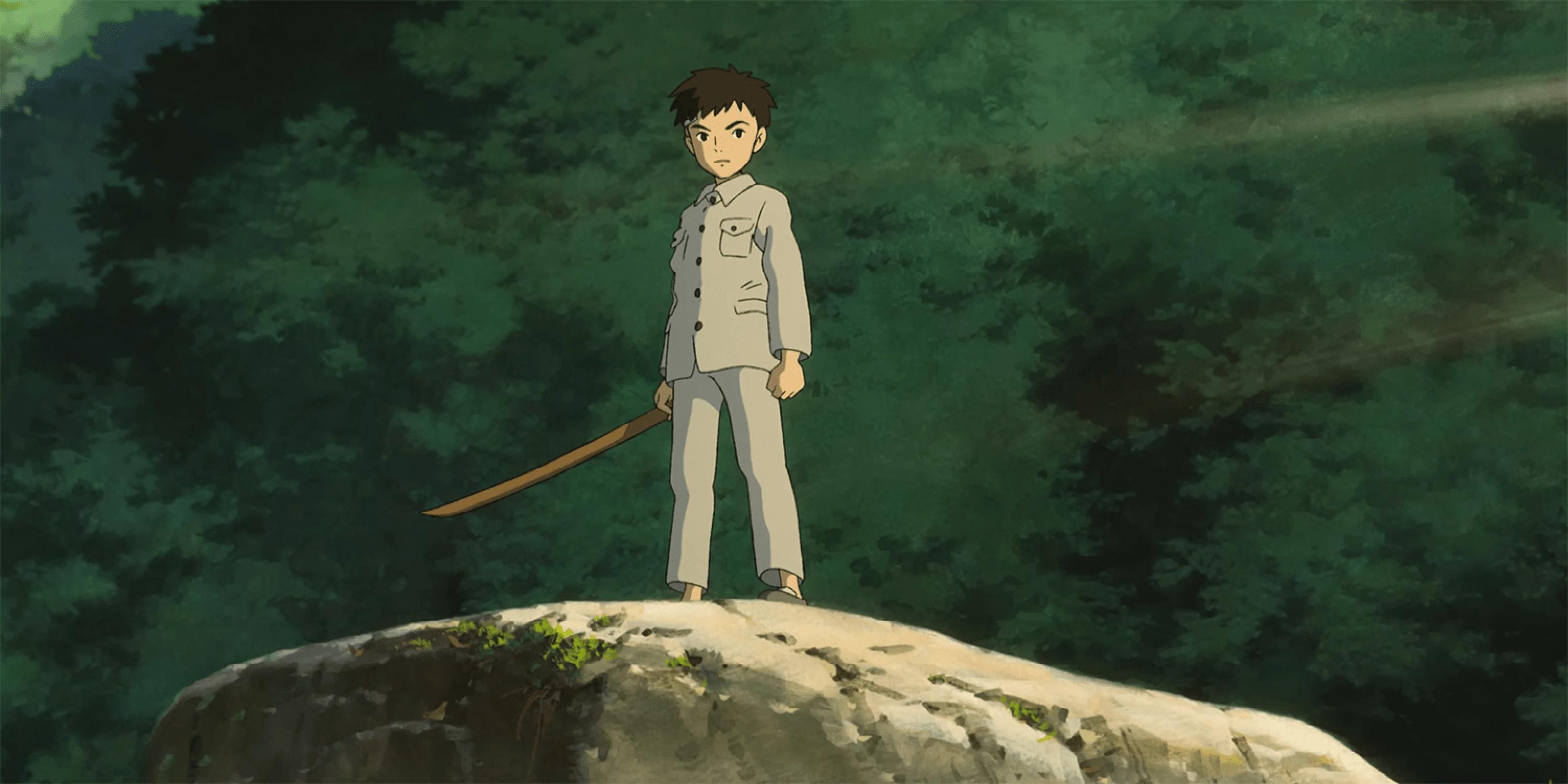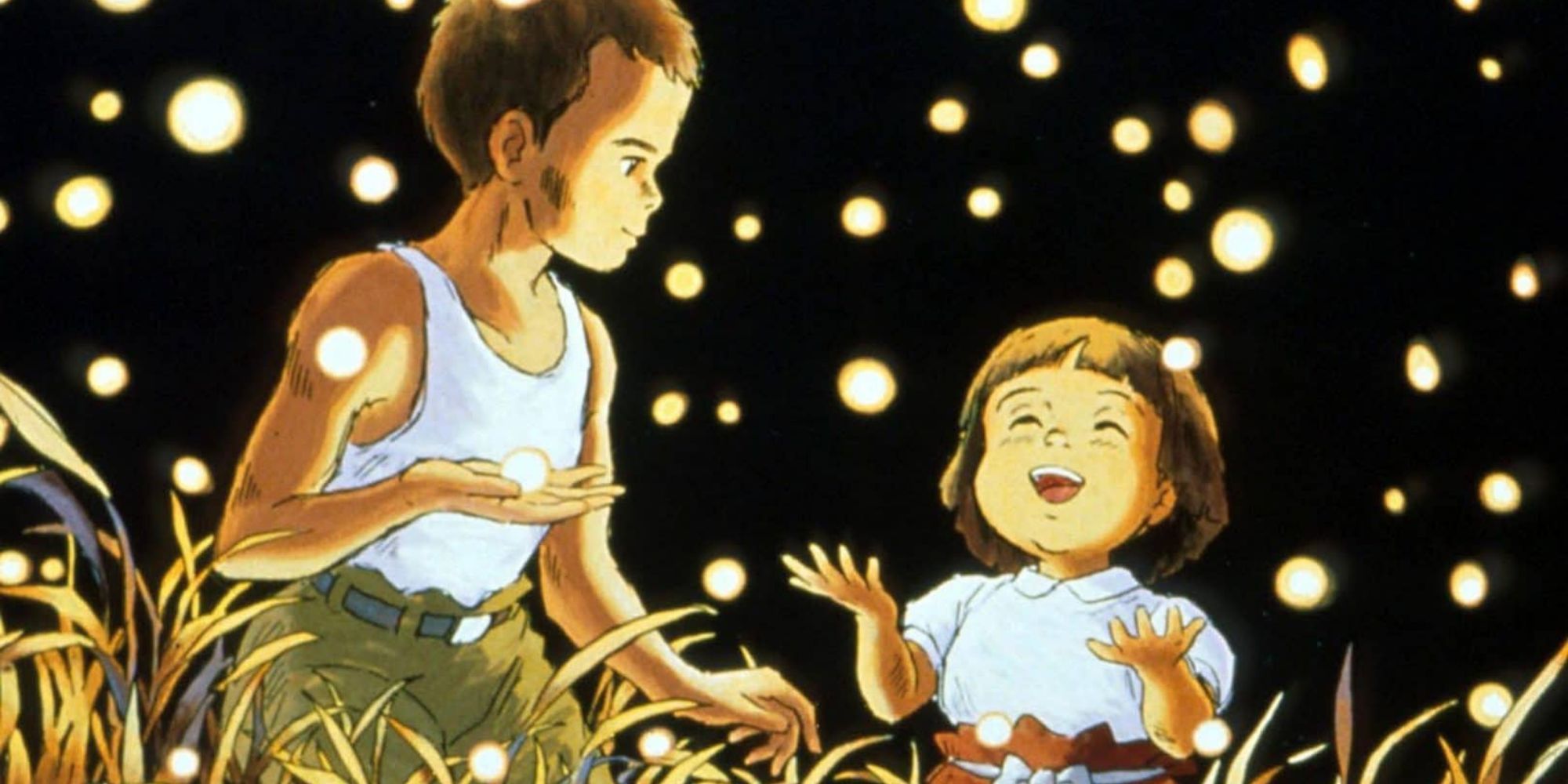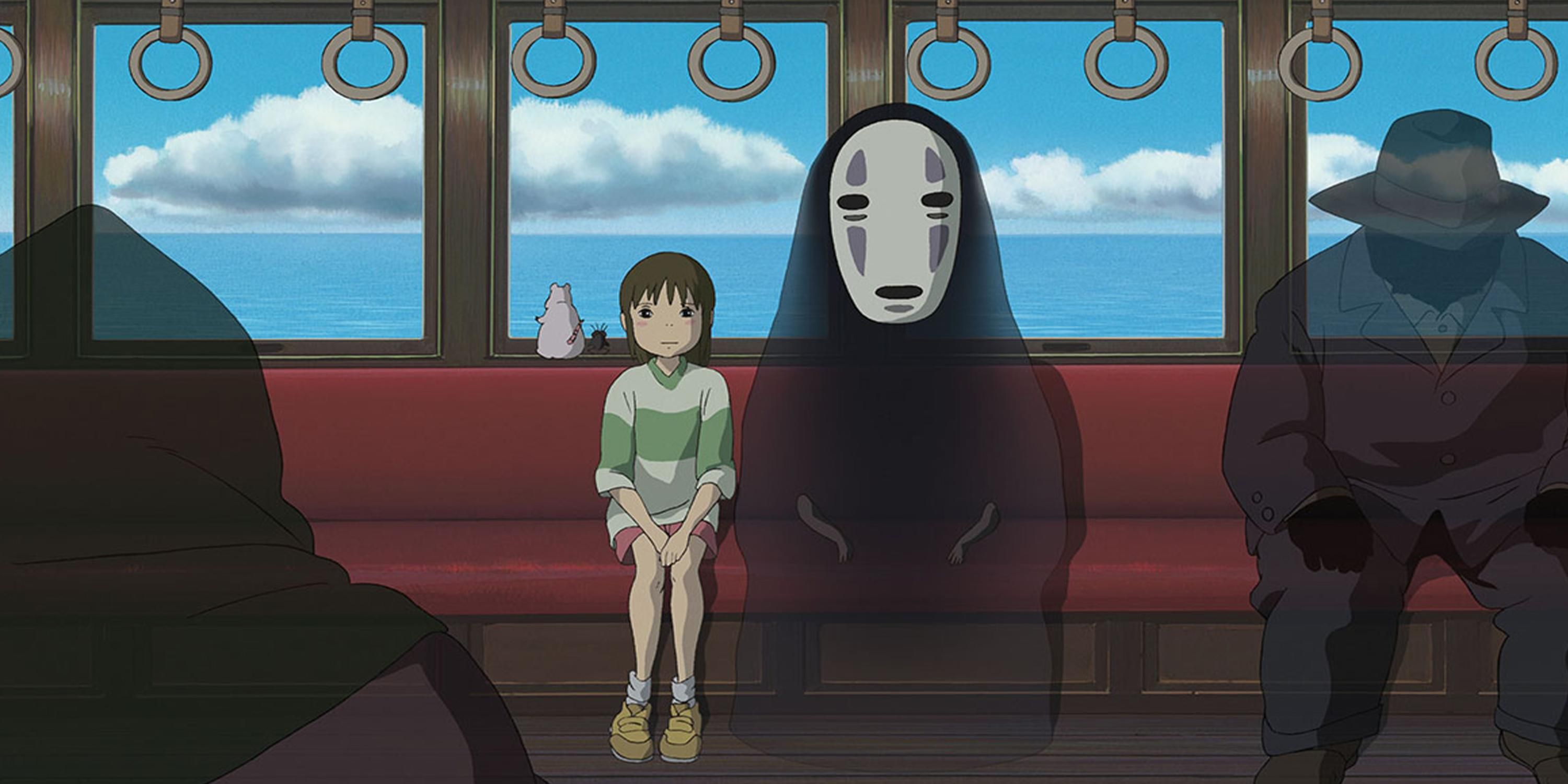Studio Ghibli isn’t just an animation studio, it’s a landmark in cinematic history. Co-founded by Hayao Miyazaki and Isao Takahata in 1985, Ghibli built its legacy on hand-drawn beauty, emotionally grounded storytelling, and a profound respect for nature, childhood, and the complexity of human behavior.
Related
Top 11 Anime Studios (And Their Best Show)
Anime studios bring stories to life, turning books into stunning animations. Here are some of the best studios and their most iconic works
While the rest of the anime world chased trends and market shifts, Ghibli did something quieter, and far more lasting. It trusted audiences, especially young ones, to understand pain, find joy in silence, and sit with ambiguity. Here are some of the best work done by Studio Ghibili.
7
Castle in the Sky
Where Dreams Soar Among the Clouds
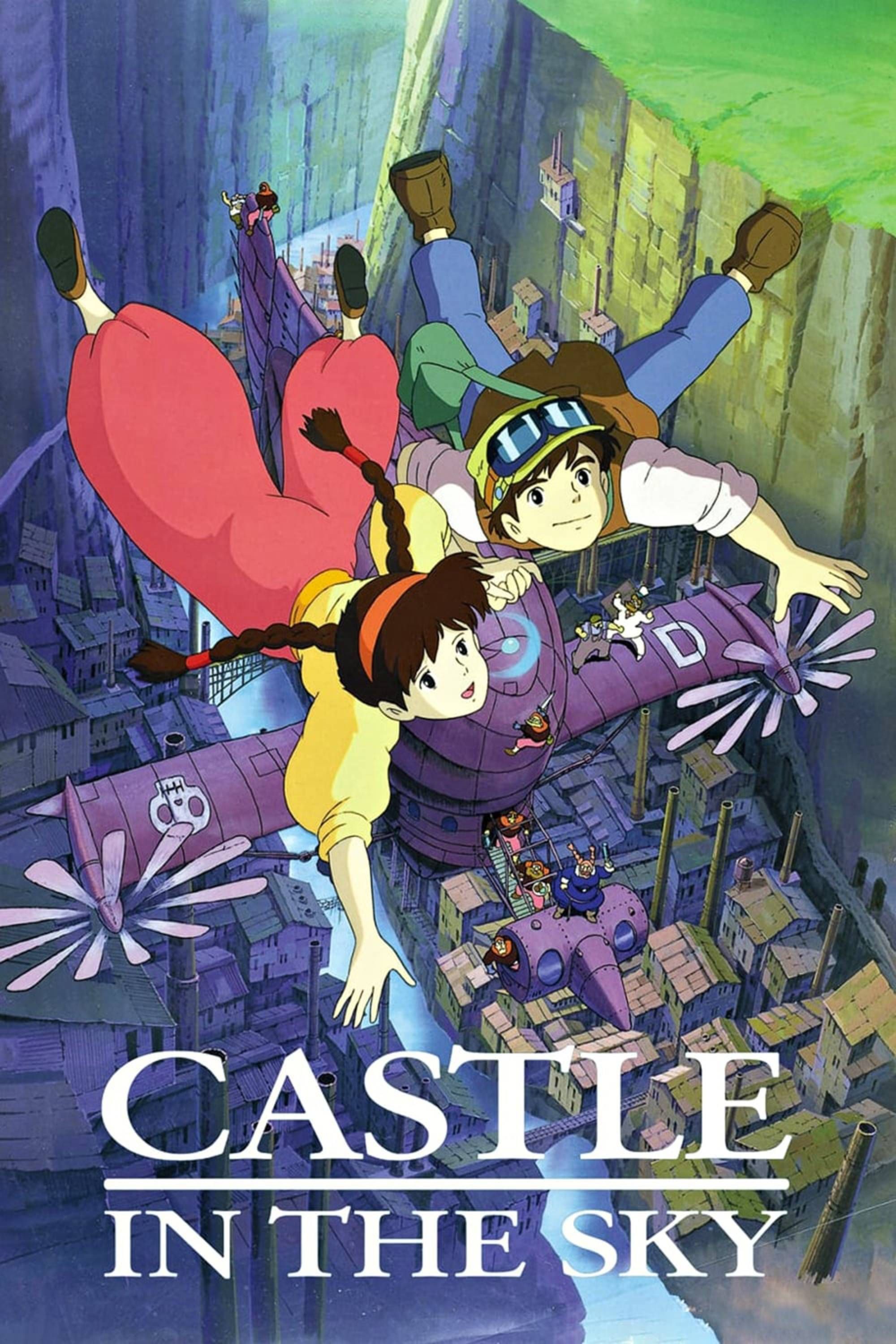
Castle in the Sky
- Release Date
-
August 2, 1986
- Runtime
-
125 minutes
- Director
-
Hayao Miyazaki
Studio Ghibli’s first official film, Castle in the Sky, released in 1986, laid the foundation for everything the studio would become known for. Directed by Hayao Miyazaki, it wasn’t just a debut, it was a declaration. Aerial landscapes, industrial fantasy, and a story built on both innocence and resistance defined this film from the start.
It follows Pazu, a miner boy, and Sheeta, a mysterious girl who falls from the sky wearing a levitating amulet. Their journey leads them to Laputa, a legendary floating city believed to be abandoned, but far from lifeless. What begins as a childhood adventure quickly unfolds into a layered narrative about lost civilizations, imperial greed, and technology without conscience.
The world of Castle in the Sky feels mechanical yet organic, with massive airships and wind-powered cities blending seamlessly with grassy ruins and mechanical guardians. Miyazaki drew inspiration from Gulliver’s Travels and Welsh mining towns he visited during a time of labor unrest, roots that you can see in the film’s working-class protagonist and themes of resistance against military exploitation.
6
Nausicaa of the Valley of the Wind
Nature’s Last Hope With A Gun And A Heart
Before Studio Ghibli was even founded, Nausicaa of the Valley of the Wind (1984) set the tone for what the studio would become. Though technically released under Topcraft, the film’s overwhelming success allowed Hayao Miyazaki and producer Toshio Suzuki to form Studio Ghibli shortly afterward. So while it isn’t “officially” a Ghibli title, it is spiritually and creatively its starting point.
The story takes place in a post-apocalyptic world covered by the “Toxic Jungle,” a mutated forest filled with giant insects and poisonous spores. Humanity clings to survival in isolated kingdoms, often resorting to war over what little clean land remains. At the center of this dying world is Nausicaa, princess of a small peaceful valley, who holds a unique bond with the creatures of the jungle.
What makes Nausicaa unforgettable isn’t just its environmental message, but the fact that it never chooses the easy route. Nausicaa is a pacifist, yes, but she’s also a fighter. She doesn’t just preach peace; she protects it, often with a rifle in hand or flying through storms on her glider. It’s one of the few anime where diplomacy is more intense than combat, and where empathy can be a form of rebellion.
The film is based on Miyazaki’s manga of the same name, which he continued to write and illustrate for over a decade after the movie’s release. The manga expands far beyond the movie’s two-hour runtime, offering a much deeper, darker, and more politically complex story. But even the film alone feels remarkably complete.
5
Howl’s Moving Castle
Where Hearts Find Home in the Most Unlikely Places
Howl’s Moving Castle (2004) is probably the most visually imaginative film in Ghibli’s catalog, and that’s saying something.
Adapted loosely from the novel by Diana Wynne Jones, the story follows Sophie, a young woman cursed with an old body by a jealous witch. Her journey leads her to a magical, walking castle owned by Howl, a flamboyant wizard with a mysterious past.
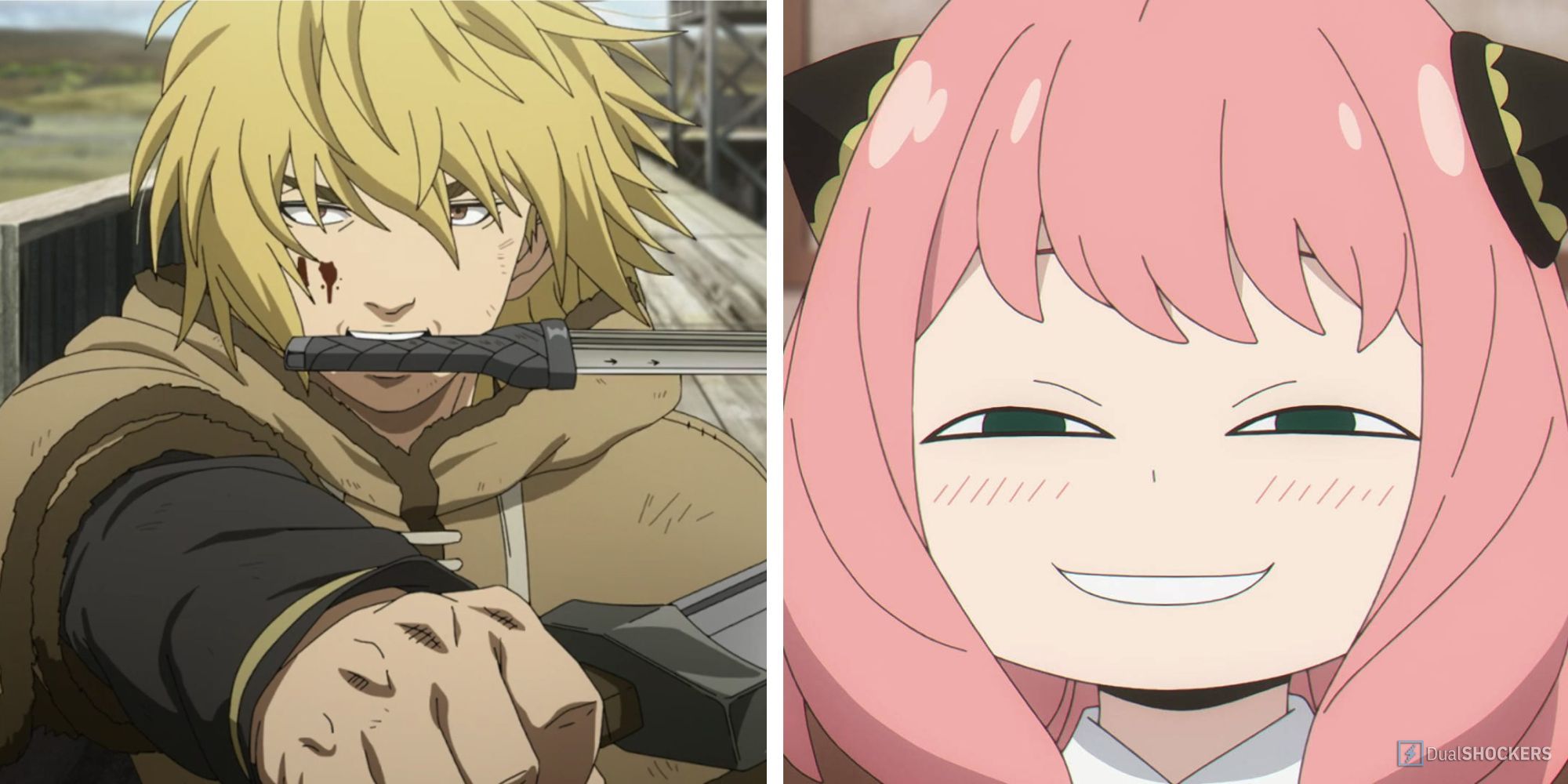
Related
10 Best Anime By Wit Studio, Ranked
Wit Studio, the animators behind hits like Attack on Titan and Vinland Saga, have created a number of incredible anime. Here are the best.
What seems like a fairy tale on the surface quickly becomes an anti-war commentary. The war raging in the background isn’t romanticized, it’s brutal, pointless, and devastating. Miyazaki, who was frustrated by Japan’s political climate during the Iraq War, used Howl as a vehicle to explore the consequences of militarism and the importance of resisting it, even if that resistance comes in the form of baking bread and loving someone despite their flaws.
The film was a massive international success, earning an Academy Award nomination for Best Animated Feature and winning awards at festivals across Europe and Asia. In France, Howl’s Moving Castle was so well-received that it outperformed many Hollywood releases at the box office.
4
Princess Mononoke
The Wolves Were Never the Villains
Released in 1997, Princess Mononoke marked a turning point in Japanese cinema. At the time, it was the most expensive anime ever made, and it became Japan’s highest-grossing film until Titanic arrived.
Set in a medieval world where humans and nature are at war, the film doesn’t offer easy answers. Ashitaka, a cursed prince, seeks peace between the two, but he quickly realizes that both sides are right, and both are wrong. Lady Eboshi isn’t a villain, but a visionary industrialist. The wolf goddess Moro isn’t evil, but she will kill to protect her land. The forest spirit gives life, and takes it.
What makes Mononoke so remarkable is that it refuses to simplify its message. Instead of good versus evil, it gives us nuance: environmentalism tangled with survival, tradition clashing with progress, and gods who bleed.
Joe Hisaishi’s score elevates every scene, but especially the haunting moments in the forest. And even now, decades later, the film is regularly studied in film schools and environmental humanities courses.
3
The Boy and the Heron
A Bird Boy’s Warped Farewell
The Boy and the Heron (2023) was marketed as Hayao Miyazaki’s final film, again. But this time, it felt different. After seven years in production and no trailers, the film arrived with mystery, ambition, and an emotional gravity that felt like a summation of everything Ghibli ever stood for.
It tells the story of Mahito, a boy grieving the loss of his mother during World War II. He moves to the countryside with his father and new stepmother, only to be drawn into a surreal, often terrifying world guided by a talking heron. The film blends fantasy with autobiographical elements: Mahito’s journey mirrors Miyazaki’s own childhood and complicated relationship with wartime Japan.
The animation is stunning, but also haunting. Bleeding pelicans, floating limbos, and towering parakeets populate a world that feels like a dream turning into a nightmare, and then back again. It’s not easily explained, and Miyazaki doesn’t try to. Instead, he invites the audience to interpret, reflect, and feel.
The film was awarded Best Animated Feature at the 2024 Academy Awards, making Miyazaki the only director to win the Oscar for
2
Grave of the Fireflies
The Flames That Illuminate War’s Darkest Shadow
Grave of the Fireflies (1988) is not a fantasy. It’s not a fairy tale. It’s the most painful movie Studio Ghibli ever made, and the one most likely to leave you silent long after the credits roll.
Directed by Isao Takahata, the film tells the true-to-life story of Seita and Setsuko, two siblings struggling to survive in Kobe after American firebombs destroy their home in the final months of World War II. There are no villains here. Just hunger, fear, and a world that turned its back on children.
Takahata based much of the film on his own wartime memories and the semi-autobiographical short story by Akiyuki Nosaka. The animation is simple, but the emotions are devastating. Setsuko’s death isn’t a climactic scene, it’s a quiet one, drawn with love, restraint, and unbearable weight.
The film was not a box office hit upon release, but its reputation only grew over time. Roger Ebert called it “one of the greatest war films ever made,” and it’s frequently cited in discussions about the human cost of conflict, not just in Japan but worldwide.
It’s often paired with My Neighbor Totoro in double screenings, not for contrast, but to show how light and darkness coexisted in Ghibli’s early works. Watch it once, and it stays with you forever.
1
Spirited Away
The Bathhouse That Cleaned The World
Spirited Away (2001) is more than just Studio Ghibli’s most famous film, it’s one of the most celebrated animated films of all time.
The story follows Chihiro, a sullen 10-year-old who stumbles into a mysterious bathhouse for gods and spirits, where her parents are transformed into pigs. To survive and free them, she takes a job under the witch Yubaba, learning not just how to work, but how to grow, remember who she is, and fight for what matters.
Visually, the film is pure magic. Every frame is handcrafted, filled with flickering lanterns, masked river gods, and tiny soot sprites pushing bits of coal. The bathhouse itself feels like a living organism, bustling with strange creatures and hidden emotions.
Upon its release, Spirited Away shattered box office records in Japan, surpassing Titanic to become the highest-grossing film in Japanese history. It went on to win the Academy Award for Best Animated Feature in 2003, the first (and still only) hand-drawn, non-English-language film to do so.
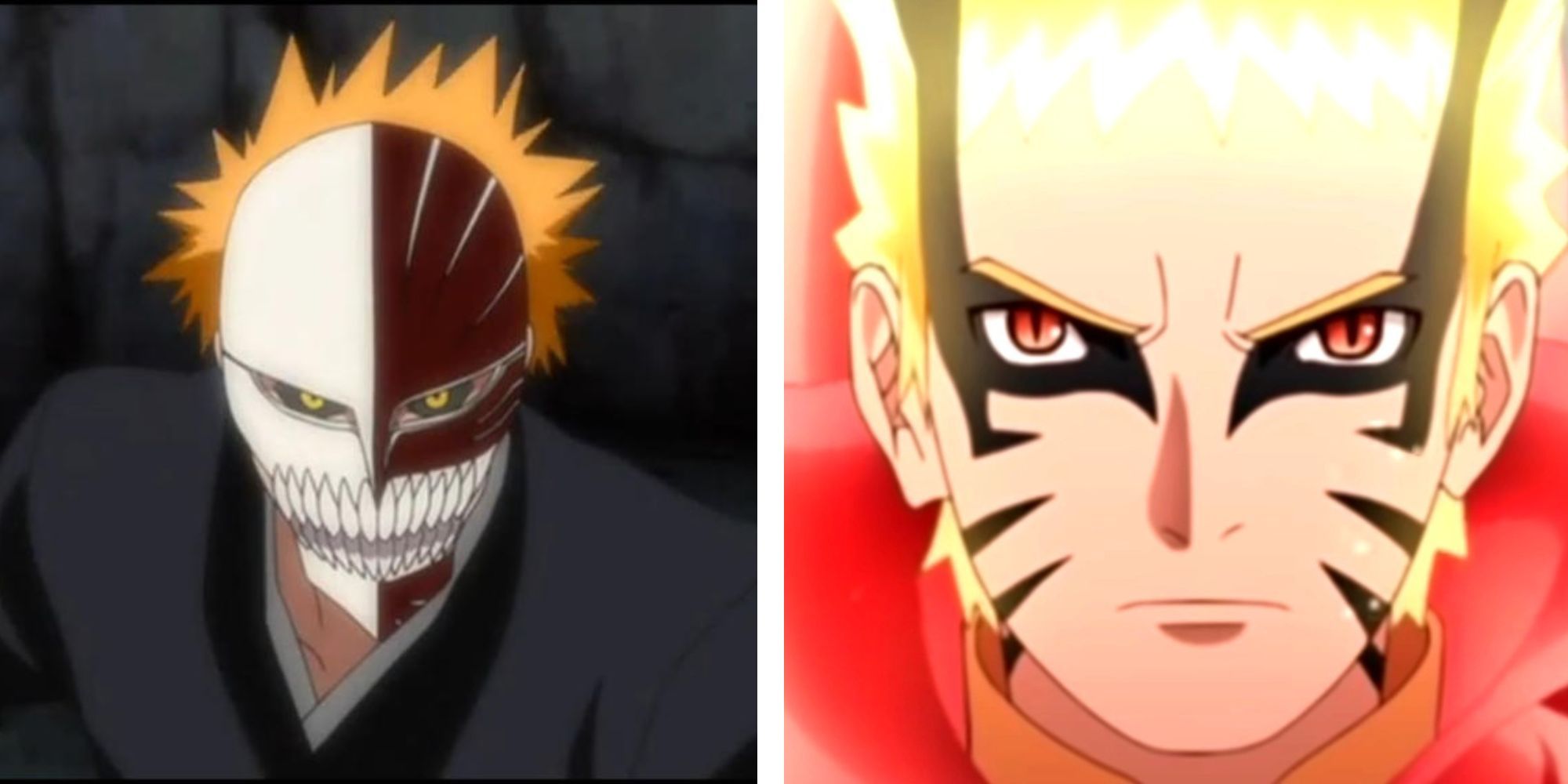
Next
10 best Anime By Studio Pierrot, Ranked
From Naruto to Tokyo Ghoul, here are some of the best anime series that came from Studio Pierrot!






